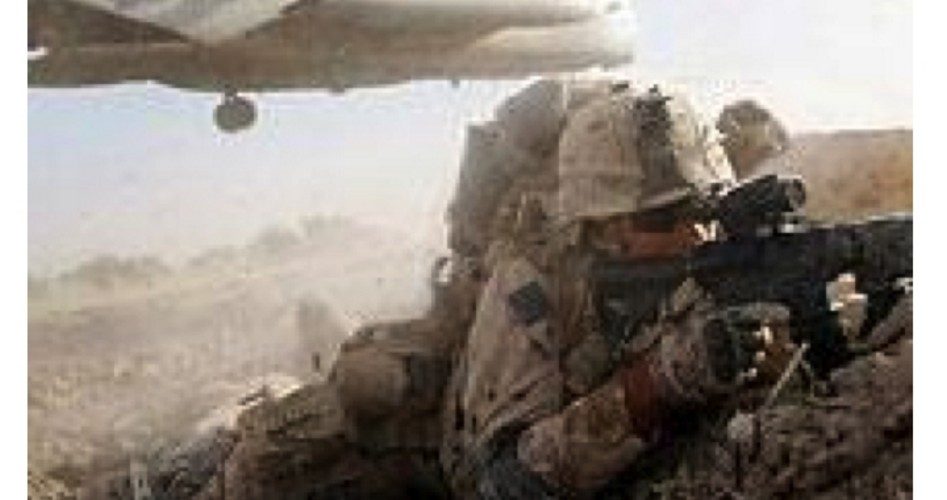
NATO’s International Security Assistance Force’s (ISAF) Joint Command lowered its flag today and formally ended its military deployment in Afghanistan on December 8. While 48 nations had contributed troops to ISAF, the United States provided 24,050 out of the total 34,512 (as of October) — more than all other nations combined. Far behind were the United Kingdom with 2,830 troops and Italy with 1,400.
After January 1, NATO will maintain a force of 13,000 troops in Afghanistan, down from a peak around 140,000 in 2011. As many as 10,800 of those will be U.S. troops.
The United States, with the support of some NATO countries including the United Kingdom and Australia, began an invasion of Afghanistan on October 7, 2001, in Operation Enduring Freedom. The invasion was launched as a response to the September 11 terrorist attacks made by the Islamic terrorist group, al-Qaeda, which had been given a sanctuary in Afghanistan by the Islamic fundamentalist Taliban then in control of the nation. In addition to removing the Taliban from power, another objective of the invasion was to capture al-Qaeda ‘s leader, Osama bin Laden. However, bin Laden was not found until 2011, when he was captured and killed in Pakistan by covert joint operation conducted by Navy SEALs and CIA operatives.
AP quoted U.S. Army General John F. Campbell (who assumed duties as the commander, International Security Assistance Force and United States Forces-Afghanistan on August 26, 2014) who said foreign troops now will focus on training and supporting local Afghan forces, which have led the fight against the Taliban insurgents since mid-2013.
“The Afghan security forces are capable,” Campbell told AP. “They have to make some changes in the leadership which they’re doing, and they have to hold people accountable.”
A spokesman for the Taliban, Zabihullah Mujahid, told AP that the militant group would continue to fight “until all foreign troops have left Afghanistan.”
“The Americans want to extend their mission in Afghanistan, the motive being to keep the war going for as long as possible,” Mujahid said. “And for as long as they do, the Taliban will continue their fight against the foreign and (Afghan) government forces.”
After the U.S.-led invasion removed the Taliban from power in 2001, it regrouped as an insurgency movement to fight the U.S.-backed administration of Hamid Karzai and the ISAF.
A report in Ireland’s Independent noted that as Afghan troops have taken over the fighting, their casualty figures have risen 6.5 percent this year, to 4,634 killed in action compared to 4,350 in 2013. In comparison, about 3,500 foreign forces, including at least 2,210 U.S. soldiers, have been killed since the war began in 2001.
President Obama recently allowed U.S. forces to launch operations against both Taliban and al-Qaeda militants, reported the Independent, broadening the mission of the U.S. forces that will remain in the country. They also provide combat and air support to Afghan troops as is considered necessary, while Afghan President Ashraf Ghani is also considering resuming night raids that might include American participation.
Though today marked the end of NATO’s official involvement in Afghanistan, the U.S. role has no clear end in sight. We reported last May that Obama had announced that while most U.S. troops would be withdrawn from Afghanistan by the end of 2014, about 9,800 would remain. Half of those will be withdrawn over the course of 2015, with those remaining to be stationed mainly at the U.S. base at Bagram Airfield or the capital of Kabul. The plan calls for withdrawing the remaining forces by the end of 2016, leaving fewer than 1,000 behind to guard the U.S. Embassy staff in Kabul.
However, that withdrawal plan has been altered. Reuters reported on December 6 that outgoing Defense Secretary Chuck Hagel had announced from Kabul that the United States will keep up to 1,000 more soldiers in Afghanistan than previously planned (10,800 as opposed to 9,800) in Afghanistan.
“The recent wave of Taliban attacks has made it clear that the international community must not waver in its support for a stable, secure and prosperous Afghanistan,” said Hagel, who arrived in the Afghan capital unannounced on the morning of December 6.
Hagel merely confirmed what Reuters and other news sources had reported in November. The New American’s Thomas Eddlem, wrote on November 24 that the New York Times had just reported that the Obama administration had secretly extended U.S. armed forces participation in ground combat operations in Afghanistan through 2015.
The Times, citing several anonymous sources, had reported on November 22:
Mr. Obama’s order allows American forces to carry out missions against the Taliban and other militant groups threatening American troops or the Afghan government. [The Obama administration now plans] a broader mission than the president described to the public earlier this year, according to several administration, military and congressional officials with knowledge of the decision.
Eddlem noted that Obama’s redeployment of combat troops to Afghanistan marks his fourth War Powers Resolution violation. He explains:
The Resolution requires the president to withdraw all troops from harm’s way if Congress has not explicitly authorized the foreign deployment by affirmative legislation. Congress did not authorize the wars in Libya or Syria, and authorized the wars in Afghanistan only to go after al-Qaeda terrorists (now removed from the nation) and in Iraq to go after weapons of mass destruction (never found in any militarily significant quantity).
In his announcement confirming the extension of U.S. troop involvement, Hagel said at a joint press conference with Afghan President Ashraf Ghani:
We have not forgotten what brought America to Afghanistan over a decade ago.
And we will take appropriate measures against Taliban members who directly threaten U.S. and coalition forces in Afghanistan or provide direct support to al Qaeda.
Hagel, who is a member of the Council on Foreign Relations — an organization that has long promoted an interventionist U.S. foreign policy that is contrary to the advice given to our nation by our early Founders — continues to advocate the continuation of our never-ending military entanglement in Afghanistan.
It is a pity that our nation’s leaders have not taken heed of the comments made by former congressman and presidential candidate Ron Paul in the Ron Paul News on June 23, 2013:
The long US war in Afghanistan never made any sense in the first place. The Taliban did not attack the US on 9/11. The Authorization for the use of force that we passed after the attacks of 9/11 said nothing about a decade-long occupation of Afghanistan. But unfortunately two US presidents have taken it to mean that they could make war anywhere at any time they please.
Related articles:
U.S. to Keep 9,800 Troops in Afghanistan After 2014
Obama Secretly Authorizes U.S. Combat Extension of Afghan War
Fired Or Not, Defense Chief Hagel Will Soon Be Gone
Obama Secretly Authorizes U.S. Combat Extension of Afghan War
As U.S. Slowly Exits Afghanistan, Communist China Steps In
CNN/ORC Survey: 82 Percent Want U.S. Out of Afghanistan
Afghanistan: Recycling an Old Strategy
Afghanistan: Will War, U.S. Occupation Continue in Perpetuity?

